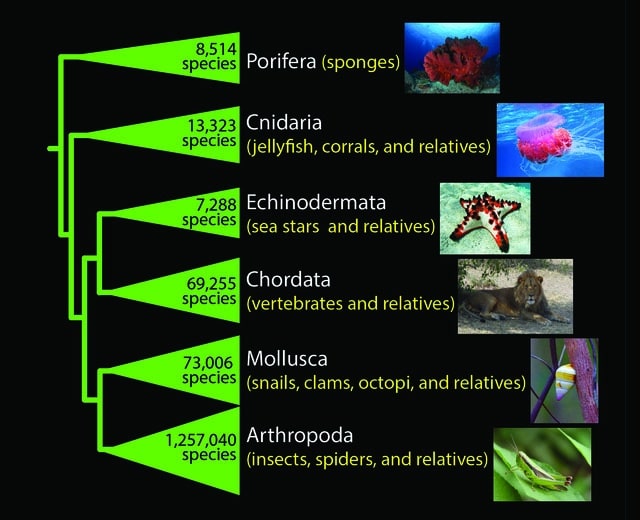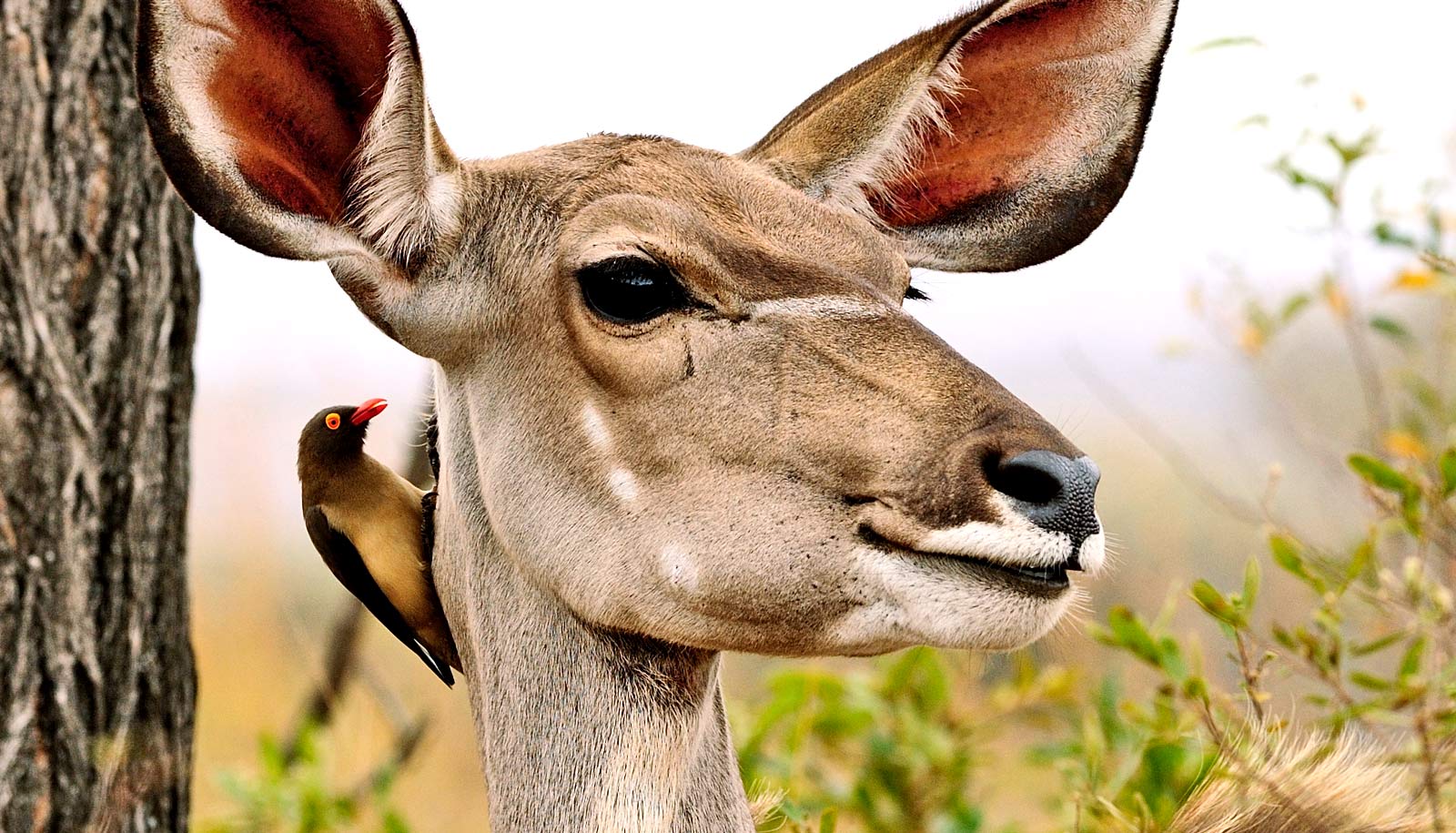Scientists now have answer to an obvious yet elusive question: Why have some groups on the evolutionary tree of animals branched into a dizzying thicket of species while others split into a mere handful and called it a day?
For millennia, humans have marveled at the seemingly boundless variety and diversity of animals inhabiting the Earth. So far, biologists have described and catalogued about 1.5 million animal species, a number that many think might be eclipsed by the number of species still awaiting discovery.
All animal species are divided among roughly 30 phyla, but these phyla differ dramatically in how many species they contain, from a single species to more than 1.2 million in the case of insects and their kin.
Animals have incredible variation in their body shapes and ways of life, including the plantlike, immobile marine sponges that lack heads, eyes, limbs, and complex organs; parasitic worms that live inside other organisms (nematodes, platyhelminths); and phyla with eyes, skeletons, limbs, and complex organs that dominate the land in terms of species numbers (arthropods) and body size (chordates).
Why snakes have more species than crocs
Biologists have long tried to find and understand the patterns that underlie species diversity: What is the recipe that allows a phylum to diversify into many species, or, in the words of evolutionary biologists, be “successful”? A fundamental but unresolved issue is whether the basic biology of these phyla is related to their species numbers. For example, does having a head, limbs, and eyes allow some groups to be more successful and thus have greater species numbers?
Three key traits
The findings of a new study help solve the problem. Scientists assembled a database of 18 traits, including those related to anatomy, reproduction, and ecology. They then tested how each trait was related to the number of species in each phylum, and how quickly species in each phylum multiplied over time (diversification). The results appear in the journal American Naturalist.
Researchers found that just three traits explained most variation in diversification and species numbers among phyla: the most successful phyla have a skeleton (either internal or external), live on land (instead of in the ocean), and parasitize other organisms.
Other traits that might seem more dramatic had surprisingly little impact on diversification and species numbers: Evolutionary accomplishments such as having a head, limbs, and complex organ systems for circulation and digestion don’t seem to be primary accessories in the evolutionary “dress for success.”

Winners and losers
“Parasitism isn’t correlated with any of the other traits, so it seems to have a strong effect on its own,” says John Wiens, of the ecology and evolutionary biology department at the University of Arizona, who explains that when a host species splits into two species, it takes its parasite population(s) with it.
“You can have a number of parasite species living inside the same host. For example, there could be 10 species of nematodes in one host species, and if that host species splits into two, there are 20 species of nematodes. So that really multiplies the diversity.”
Wiens and coauthor Tereza Jezkova used a statistical method called multiple regression analysis to tease out whether a trait such as parasitic lifestyle is a likely driver of species diversification.
“We tested all these unique traits individually,” Wiens says. “For example, having a head, having eyes, where the species in a phylum tend to live, whether they reproduce sexually or asexually, whether they undergo metamorphosis or not. And from that we picked six traits that each had a strong effect on their own. We then fed those six traits into a multiple regression model. And then we asked, ‘What combination of traits explains the most variation without including any unnecessary variables?’—and from that we could reduce it down to three key variables.”
Evolution pop quiz: How much do you know?
The analysis doesn’t make any assumptions about the fossil record, which is not a true reflection of past biodiversity, since it doesn’t reveal most soft-bodied animals or traits like a parasitic lifestyle.
“We wanted to know what explains the pattern of diversity in the species we see today,” Wiens says. “Who are the winners, and who are the losers?”
Marine biodiversity is in jeopardy from human activities such as acidification from carbon emissions, posing an existential threat to many marine animals, Wiens says.
“Many unique products of animal evolution live only in the oceans and could easily be lost, so groups that have survived for hundreds of millions of years could disappear in our lifetime, which is terrible,” he says. “Many of the animals’ phyla that are losers in terms of present-day species numbers tend to be in the ocean, and because of human activity, they may go completely extinct.”
The study also suggests that human-caused extinction may wage a heavy toll on Earth’s biodiversity because of the effect of secondary extinctions, Wiens says.
“When a species goes extinct, all its associated species that live in it or on it are likely to go extinct as well.”
Source: University of Arizona



